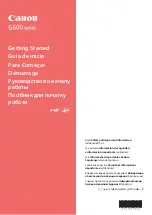
PJL
3-87
Unlocking a Protected File or Device
Use the LDECLARE command to specify a password so a protected file or device may
be accessed or “unlocked.” The LDECLARE command is only allowed within a JOB/
EOJ combination.
LRWLOCK with LDECLARE specified unlocks a file or device for reading and writing.
LWLOCK with LDECLARE specified unlocks a file or device for writing only. The file
or device
must
be re-locked using the LDELETEPASSWORD command after the job
is completed. The file or device is not automatically re-locked with the EOJ command.
Syntax:
@PJL LDECLARE LRESOURCE : "
device:filename.filetype
"
LRWLOCK = "
password
"[<CR>]<LF>
@PJL LDECLARE LRESOURCE : "
device:filename.filetype
"
LWLOCK = "
password
"[<CR>]<LF>
LRESOURCE : "
device:filename.filetype
"
Values for "
device:filename.filetype
" are:
device
flash
,
flash1
,
disk
, or
disk1
(case insensitive)
filename
A unique identifier for a file, such as the macro ID for a PCL
macro, the symbol set ID for a PCL symbol set, the font ID for a
PCL font, or the actual file name for data, Type 1 fonts, and
demo files as shown on the Directory. The
filename
is case
sensitive.
filetype
An identifier that categorizes the file, such as
p5macro
for PCL
macros or
p5symset
for PCL symbol sets. See the table
beginning on page 3-79 for a complete list of the supported file
types. The
filetype
is case sensitive.
LRWLOCK = "
password
"
or
LWLOCK = "
password
"
See “Printer Unique LRESOURCE Variables” on page 3-44 for information about
values for
LRWLOCK = "
password
"
and
LWLOCK = "
password
"
parameters.
Note:
This should be the same password that was defined in the DEFAULT
command. See “Password Protection for a File” on page 3-85 and “Password
for an Entire Device” on page 3-86 for examples.
















































